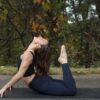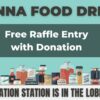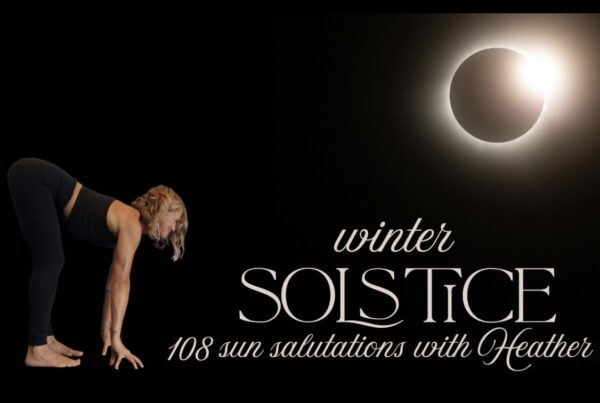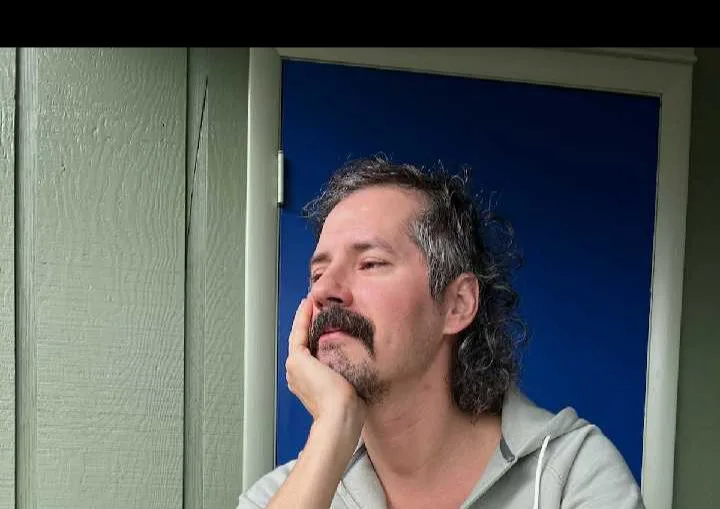
If you are lucky enough to practice near our student ambassador, Michael Sexauer, you will come away buoyed by his strength and composure. Michael is an artist and a longtime student at HYA, whose life took a stunning turn when he suffered a stroke in 2021. Here is his story, and how he used yoga to rebuild his health and his strength. You can see his work as a stained glass artist via his Instagram page @cat_daddy_glassworks.
HYA: When did you first start practicing?
MS: I first started yoga in 2017.
HYA: What is your favorite style?
MS: My favorite style is hot slow flow because I find that I can get deeper and really commit to the poses. Slow flow has helped me immensely to rebuild my physical and mental foundations.
My practice took a hiatus in July of 2021, when I unexpectedly had a hemorrhagic stroke that left me completely paralyzed on my left side. Two days after the stroke, I had a craniectomy, or part of my skull removed, to prevent the swelling from causing more brain damage. I spent about 3 weeks in the hospital and 3 weeks in an in-patient rehab. While in therapy, it became clear that because of yoga, I had the core strength, the balance, and the mental fortitude to not only learn how to get by with only the use of my right side, but to recover, too.
Once I came home, and after a few weeks of outpatient therapy, I began to practice yoga again at home. The day I held my first down dog post-stroke, with the support of my left arm, was monumental. Even though I couldn’t quite yet walk into the studio, I knew that day wasn’t as far away as I once previously thought, and I was eager to get back to HYA. After a few more months of work, and shortly after I had the bone piece reattached to my skull in October 2021, I walked back into the studio again.
Over the past year and a half, my yoga practice has been critical in rebuilding my body, mind, and spirit. On the days when I was feeling so bad and my medication wasn’t taking, I would go into yoga. It would be one of the few things that would make me feel better. Rebuilding my body has been one of the hardest things I’ve ever had to face, but I’m grateful I had yoga to help me through.
Being an artist, losing the ability to use my left hand was an obstacle that was extremely difficult to overcome. Through extensive OT, hundreds of down dogs, and community support, however, I was able to regain function in my hand, core, and entire left side to be able to continue my passion of working with stained glass.
Wanting to make something beautiful out of such a life-changing and challenging experience, I created a stained glass window panel to reflect the story of my stroke experience. The shape is based on the piece of skull that was removed from my head. There is a ton of symbolism in the piece for me, and while completing this piece was strenuous, and made me confront a lot of things, it was, above all, cathartic.
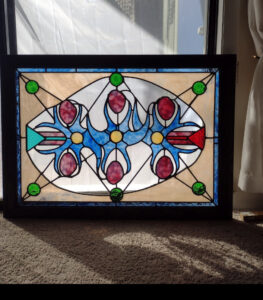
HYA: What is your advice to a new student?
MS: Yoga is like a personal trainer for both your brain and your body, so don’t quit.
I’d also encourage everyone to remember the acronym FAST to identify a stroke when it’s happening: Face drooping, arm weakness, speech difficulties, and time. If you or anyone you see is experiencing these symptoms, call 911 right away and take an ambulance to the hospital, as the EMS will be able to intervene and provide help on the way to the hospital.
If you take anything from my story, let it be the importance of taking care of your body and mind as well as the importance of community. Those two things, plus the love from a good woman (Torey Siebart) can get you through almost anything.
HYA: What makes you love HYA?
MS: I love HYA for the community, support, and healing offerings. I’ve met really positive, healthy-minded individuals that have guided me through this journey, like Paul Farago and Heather Parks, and shout-out to Lindsay Spirit Helm, who got me into the studio many years ago. The way the studio rallied for me when I was in the hospital is something I will never forget. It was incredibly moving to see the outpouring of support from the HYA community and I consider it an essential part of my post-stroke physical and mental recovery.

